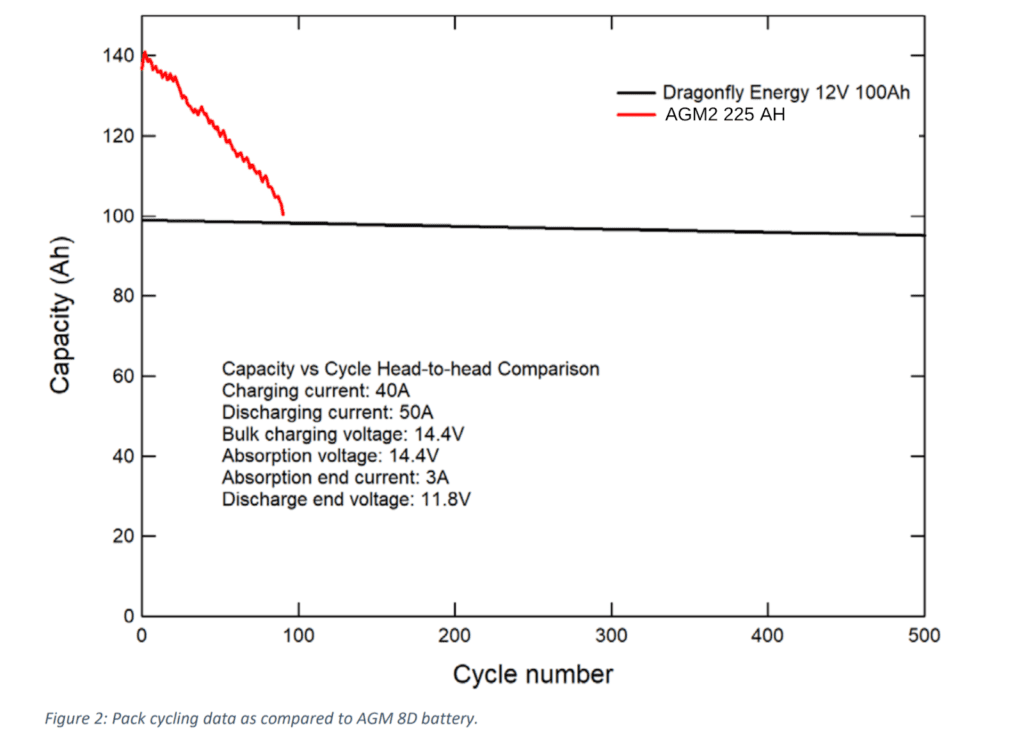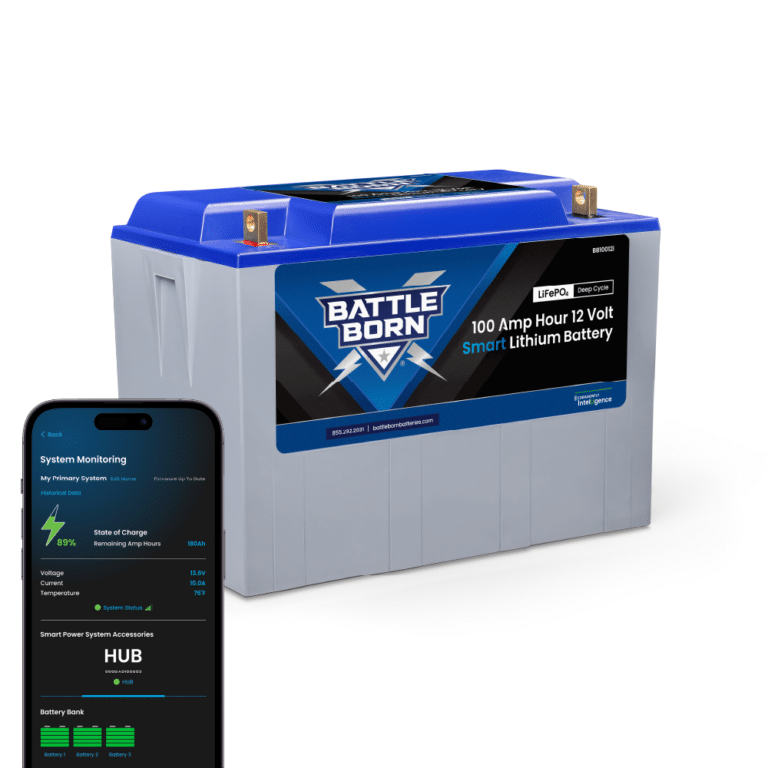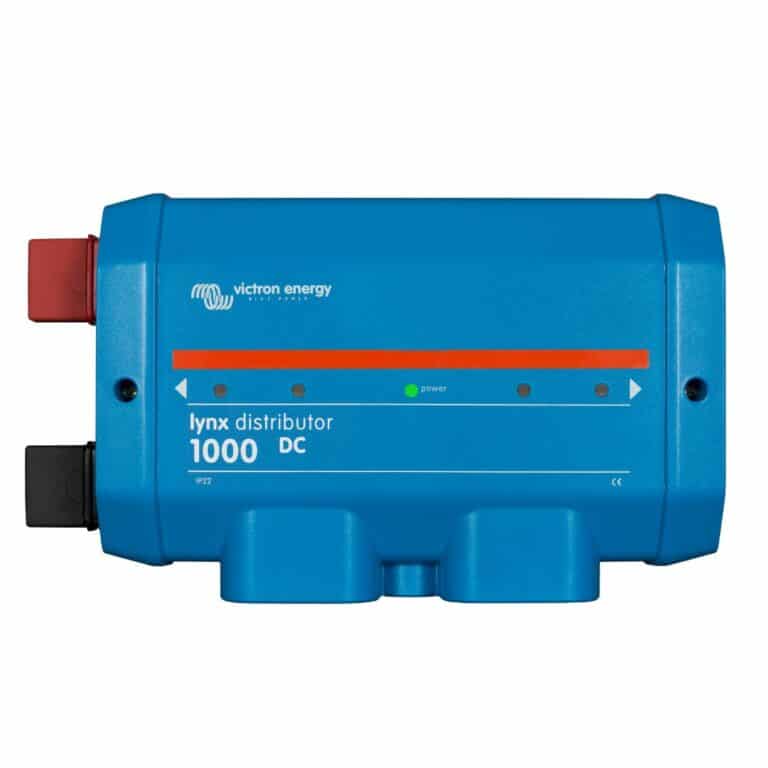
MENUMENU
TALK TO AN EXPERT
Special Hours: 7AM – 6PM PST
TALK TO AN EXPERT
Special Hours: 7AM – 6PM PST
We get it–the thing you’re most concerned about when it comes to your battery is that it gives you the power you need. But understanding the different types can be crucial to selecting the right one to keep you powered up and on the go. While you may be somewhat familiar with an old-school flooded lead-acid battery, you may know less about an AGM battery and the benefits and drawbacks of this style. Or is it better to upgrade to lithium?
So let’s break down the most important things all battery users need to know.

At its core, an AGM is still a lead-acid battery. AGM stands for absorbent glass mat, which refers to the technology these devices use to create power. This fiberglass mat sits between the positive and negative lead plates of your battery. Then, as the name suggests, it absorbs and holds the battery acid. That way, it doesn’t freely flow around the battery.
This absorbent mat design is the primary difference between an AGM and a flooded lead-acid battery. Traditional lead-acid batteries simply use lead plates suspended in the electrolyte solution while the liquid flows freely around them.
As mentioned before, an AGM battery is still a lead-acid battery, just in a different design. These batteries still suffer many of the same problems that traditional flooded lead batteries have but do offer a few benefits.
AGM batteries are best used in starting applications. You’ll most commonly find them in vehicles like cars, trucks, RVs, boats, and other motorized vehicles. They provide intense bursts of power as a starting battery. They can be used for energy storage applications as well, but their cost and poor performance make them a lesser choice for these applications.
So why would someone consider an AGM battery instead of the flooded versions you’ve likely been using for years or decades?

You must open up flooded lead-acid batteries to top off their fluids periodically to maintain the correct balance of electrolytes and water. Without this necessary maintenance, your batteries won’t operate as efficiently as possible and eventually become damaged. There’s no similar requirement for AGM batteries, as they’re sealed by design. This means they’re virtually maintenance-free.
You can also install an AGM battery in a non-vented way. You often must vent traditional batteries, as they release gases as part of their normal operation. These can build up with corrosive or even potentially explosive consequences without proper ventilation. This lack of venting requirements means more flexibility for you in installation.
The installation benefits of an AGM battery go far beyond helping with venting. While you must install traditional flooded lead-acid batteries right-side-up to prevent fluid leaks, AGM batteries have no such restrictions because they’re sealed. That means you can install them upside down, on their side, or in any other position without significant effect on battery operation. In a crowded engine compartment or small RV battery space, this can be incredibly helpful in freeing up additional space.
While AGM batteries have many benefits, their main drawback is cost.
AGM batteries tend to cost quite a bit more than flooded lead-acid. This price differential may be worth it if you are using it for the correct application. As a starting battery, this could be very beneficial, but for energy storage, the price increase compared to their performance is not worth it.
In the below video, Mortons on the Move test AGM batteries against flooded lead-acid and lithium-ion (LiFePO4) batteries. The results show that AGM is not worth its price for storage applications.
While AGM batteries have some significant advantages over typical flooded lead-acid batteries, they don’t compare at all to Lithium-Ion Batteries in storage applications. Lithium batteries have some major upsides compared to all lead-acid batteries. They’re a favorite for their lower weight and higher energy efficiency, the ability to fully discharge them, better operation in extreme temperatures, and longer life overall.
The only application where an AGM battery will currently outperform lithium is in engine starting applications. They are good at providing huge amounts of current for short periods of time as long as they are recharged immediately.

The short answer is it depends. In starting applications, you may find AGM batteries last longer than flooded lead-acid. Generally, you can expect an AGM to last for six to eight years in a starting application.
For storage applications, it’s a toss-up between flooded and AGM. For deep cycle storage applications, it’s not uncommon to see a cycle life of around 300-500 cycles if you charge them fully and regularly. This drops if you let them drain too low or only partially recharge them. This tends to equate to around 2 years of usable life in moderate use.
This is why batteries like our lithium with 5000 usable deep cycles far outperform AGM in every regard.

When considering upgrades to your vehicle, your battery may not always be top of mind. But an AGM battery can provide significant advantages to just about anyone who currently uses a traditional flooded lead-acid battery.
On the other hand, if you are looking to upgrade a storage application, you will want to skip the AGM battery and go straight to the lithium upgrade. In the long run, it’ll be cheaper and much less of a hassle, after all.

We know that building or upgrading an electrical system can be overwhelming, so we’re here to help. Our Reno, Nevada-based sales and customer service team is standing by at (855) 292-2831 to take your questions!
Also, join us on Facebook, Instagram, and YouTube to learn more about how lithium battery systems can power your lifestyle, see how others have built their systems, and gain the confidence to get out there and stay out there.
Shop Best Sellers








Ask a technical specialist now at 855.292.2831
Stay in the Know
3 thoughts on “What Is an Absorbent Glass Mat (AGM) Battery?”
Thank you for this information on AGM batteries. I’m doing some remodeling in my trailer and want to move my AGM batteries inside in preparation for going with Lithium batteries in the future. There’s so much conflicting information online about the safety of putting AGM inside, so I was happy to find this article telling us it’s safe. Eventually I want to replace my AGM batteries with Battle Born, so moving my AGM inside is the first step to that goal.
Thanks again!
I have a solar controller, Blue Sky Energy 3024i. It has interstate maintenance-free batteries, Group 27-31, 4 batteries total. I’ve been through the owners manual and it only lists flooded and agm. Do you have a lithium battery for this application ?
Our batteries are drop-in replacements for typical lead acid batteries. This means that our batteries are designed to fit like a normal Group 27, 31, and GC2 battery in your bank. This, however, does not mean our batteries are plug-and-play. Our batteries still may require specific components and programming to run your application. To figure out if your components will work with our batteries, give us a call at (855) 292-2831 (M-F 8:00 am – 4:30 pm (PST)) or send us an email at [email protected].